LeShuttle ups its game with a forthcoming new terminal design by Hollaway Studio
LeShuttle’s overhauled terminal in Folkestone will befit its role as the prime hub for the channel tunnel and as a gateway into Europe

Passengers using the Channel Tunnel’s car service, the LeShuttle train, will be getting a new experience on both sides of the water thanks to this proposed terminal transformation by Hollaway Studio. The comprehensive overhaul starts this year and will continue until 2030 as the service updates all facets of its cross-channel customer experience.
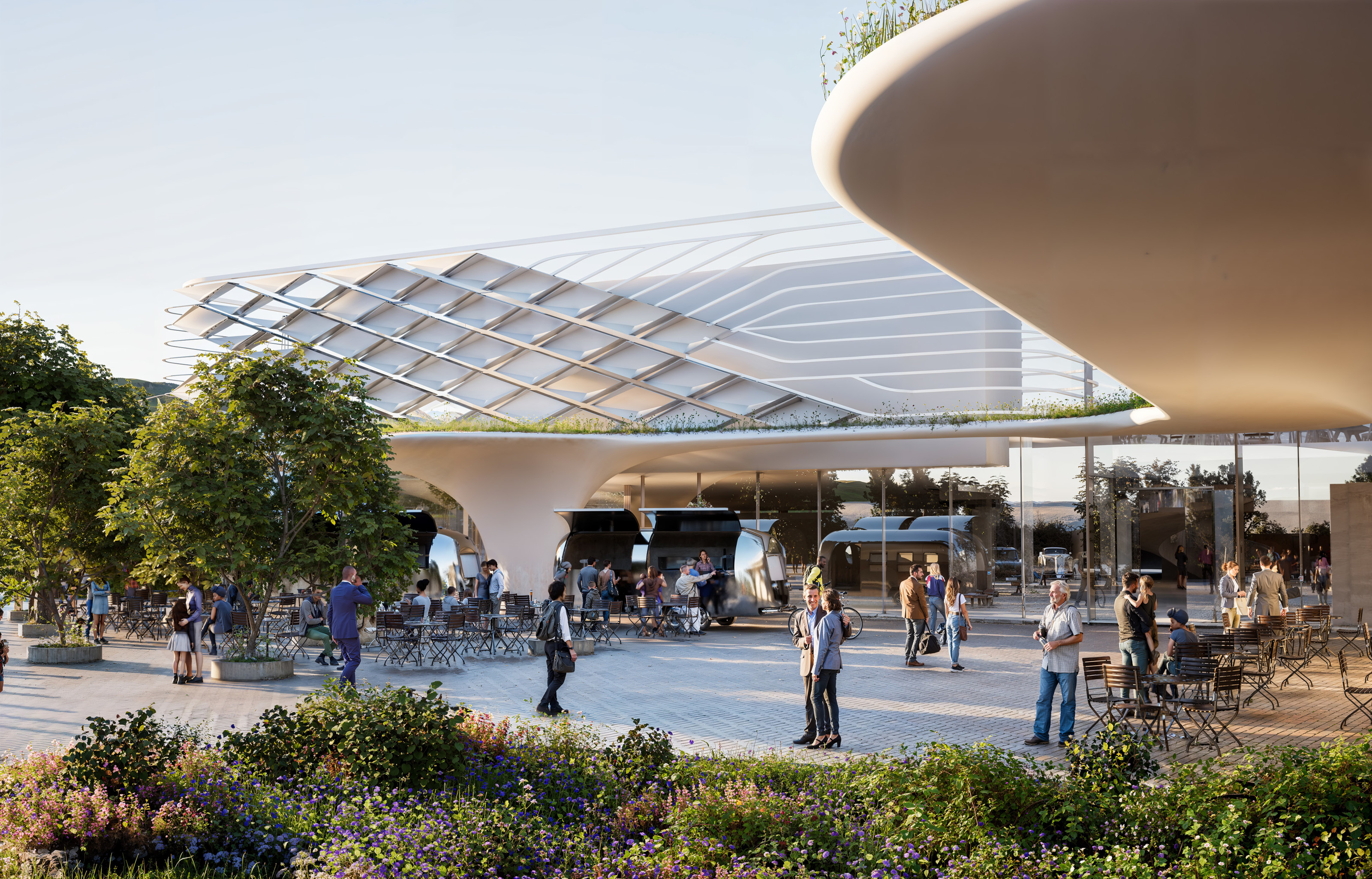
Render of the LeShuttle terminal redesign by Hollaway Studio
Overseen by local architects Hollaway Studio, the project is both an overhaul for the brand and a fine example of adaptive re-use, taking the bones of the original terminal structure and bringing it up to date inside and out. According to studio head Guy Hollaway, the project is a significant one for their modestly sized practice and came about due to their close involvement in local policy.
Projects like the town’s acclaimed Rocksalt Restaurant, f51, an indoor skatepark, and the Curious Brewery and Elwick Place leisure complex in Ashford and are all testament to Hollaway Studio’s engagement with architecture and urbanism in Kent and run alongside more bespoke private house projects.
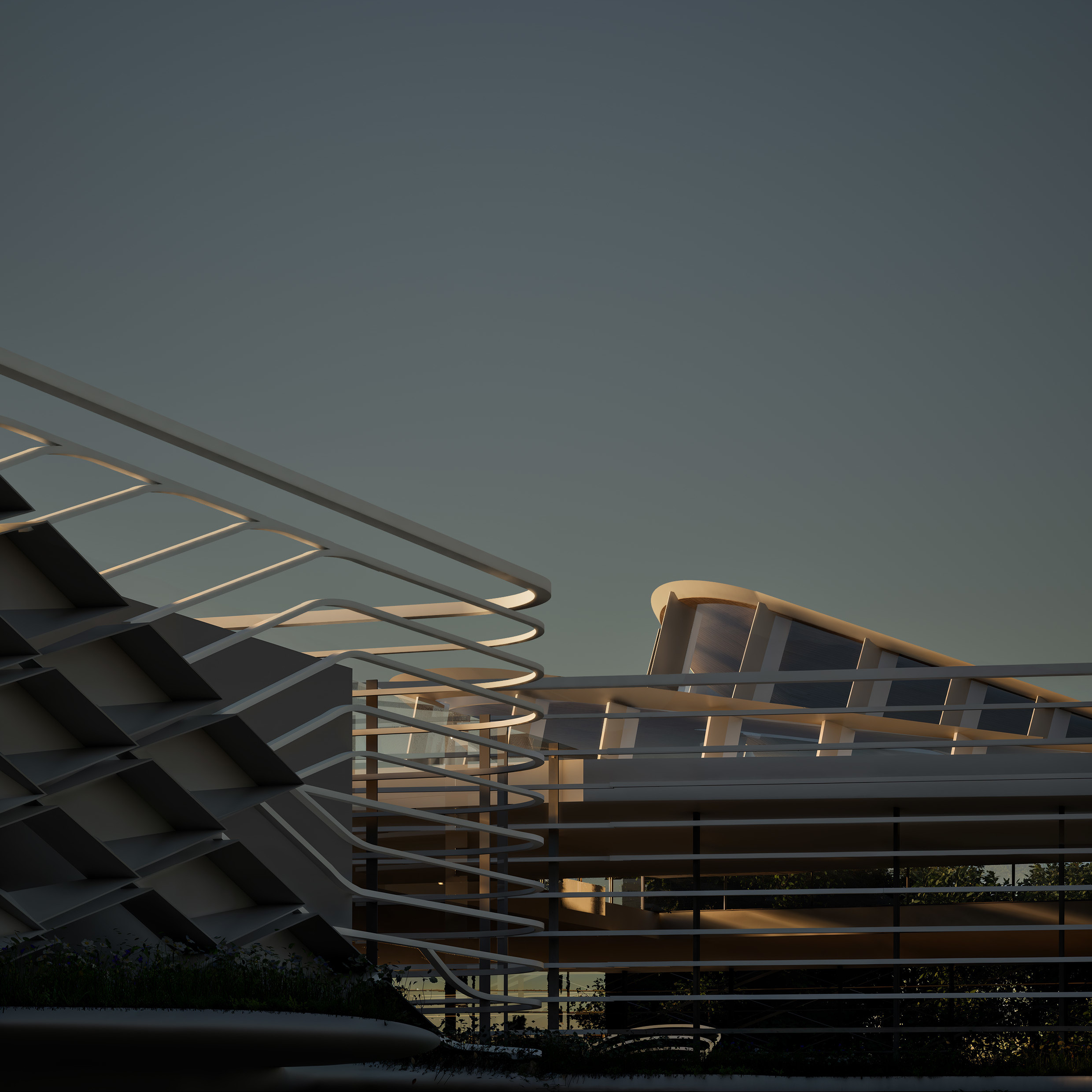
Render of the LeShuttle terminal redesign by Hollaway Studio
‘I’m very involved in proposals for Kent and the future of Folkestone,’ Hollaway concurs, adding that his London and Kent-based practice also has a long-running relationship with LeShuttle. ‘They invited us to bid for their framework, which we won,’ he adds, a victory that has given the office responsibility over both English and French sides of the tunnel operation, with the latter in Coquelles, near Calais.
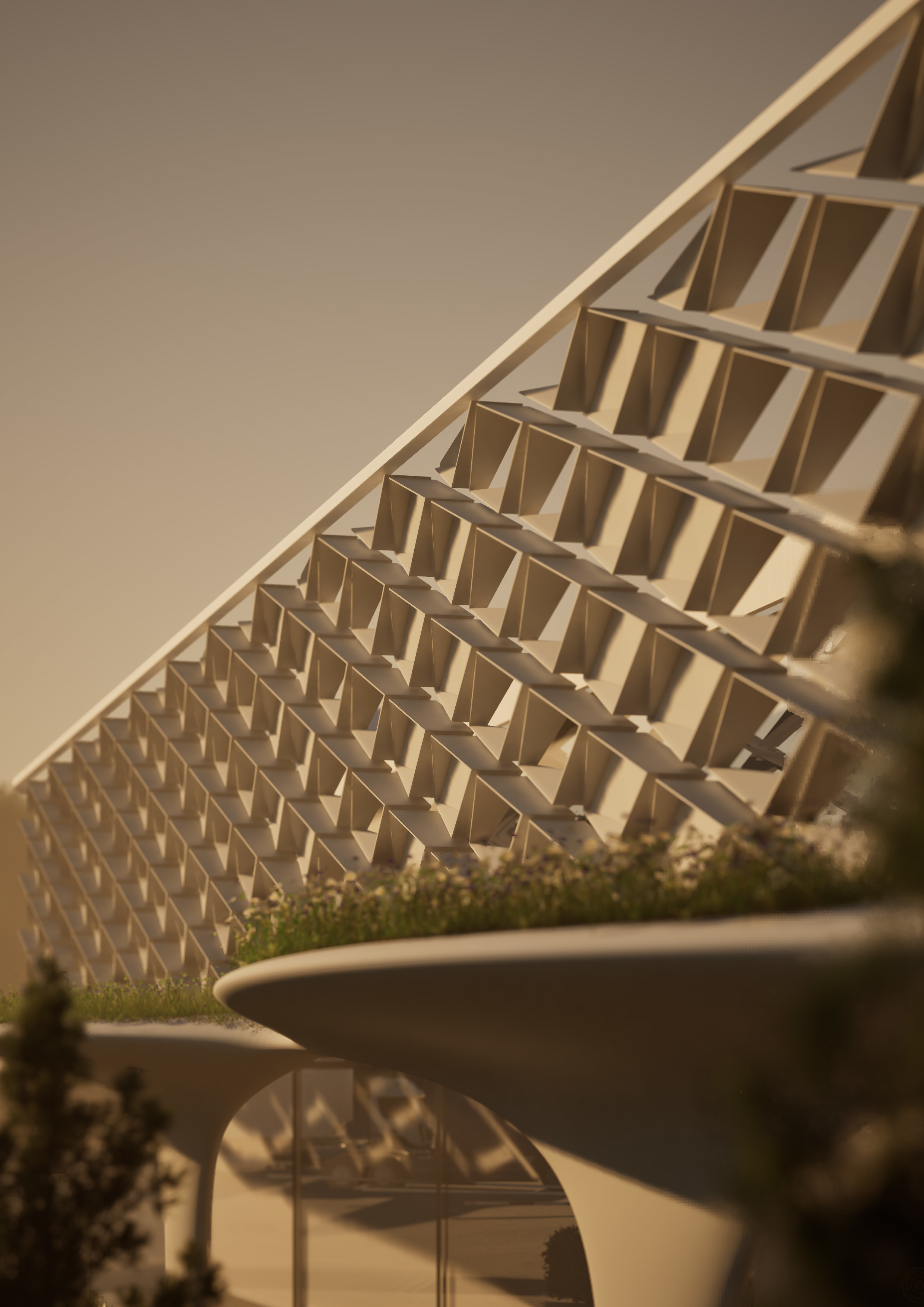
Render of the LeShuttle terminal redesign by Hollaway Studio
One of the catalysts for the overhaul was changing patterns of how the channel tunnel is used. LeShuttle worked with Engine, a design consultancy who dug deep into the customer profile and helped formulate the brief. ‘They broke it down into six types of customers,’ Hollaway explains, ‘from those who had all the time in the world to those who just want to fly through [as quickly as possibly].’
The modern emphasis on lingering, dining and possibly even shopping in the once liminal spaces of transit has re-shaped the modern airport and railway station. Now it’s LeShuttle’s turn.

Render of the welcome desk at the LeShuttle terminal redesign
‘Travel has changed – it’s not just about A to B,’ says Hollaway, ‘the whole experience of going on LeShuttle is part of your holiday.’ As the architect points out, this is perhaps the most sustainable way of getting from the UK to Europe with the service powered by low carbon electricity supplied by France’s EDF. All that was needed was a better spatial experience. Work has now started on site, with completion due before the end of next year.
Receive our daily digest of inspiration, escapism and design stories from around the world direct to your inbox.
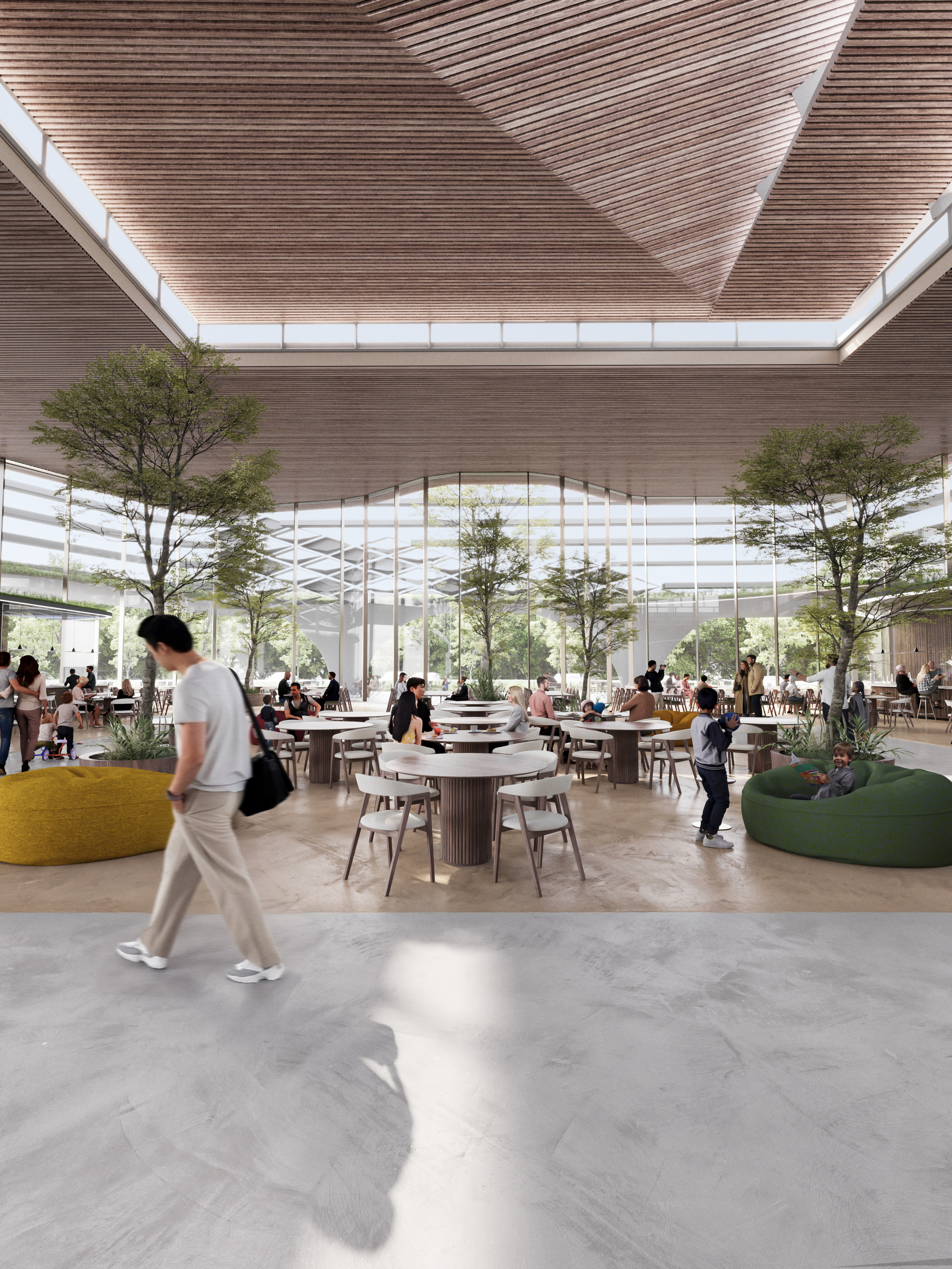
Render of the food hall at the LeShuttle terminal redesign

Render of the VIP lounge at the LeShuttle terminal redesign
Tasked with improving the dwell time, as well as other aspects of channel tunnel travel that don’t necessarily apply to other services, such as the facilities for pets, Hollaway Studio will expand and open up the space. ‘On average, about 1,000 dogs a day go via the tunnel,’ Hollaway notes, ‘it’s a great way to travel with a pet, so we’ve gone mad for them with a landscaped area and their own specialist space.’

Render of LeShuttle terminal redesign
In addition to new landscaping there’s also a sinuous lattice of reconstituted concrete which will envelop the refurbished terminal. This form was inspired by the microscopic structure of chalk, the material that the channel tunnel owes its existence to.
‘The tunnel is set within the sliver of chalk that runs between the UK and France,’ Hollaway explains, ‘the lattice weaves in and out of the framework of the existing building. At the end I will challenge anyone to tell that it’s not a completely new building. It’s a very sustainable approach.’ A new solar array will also cover the extended roofscape.
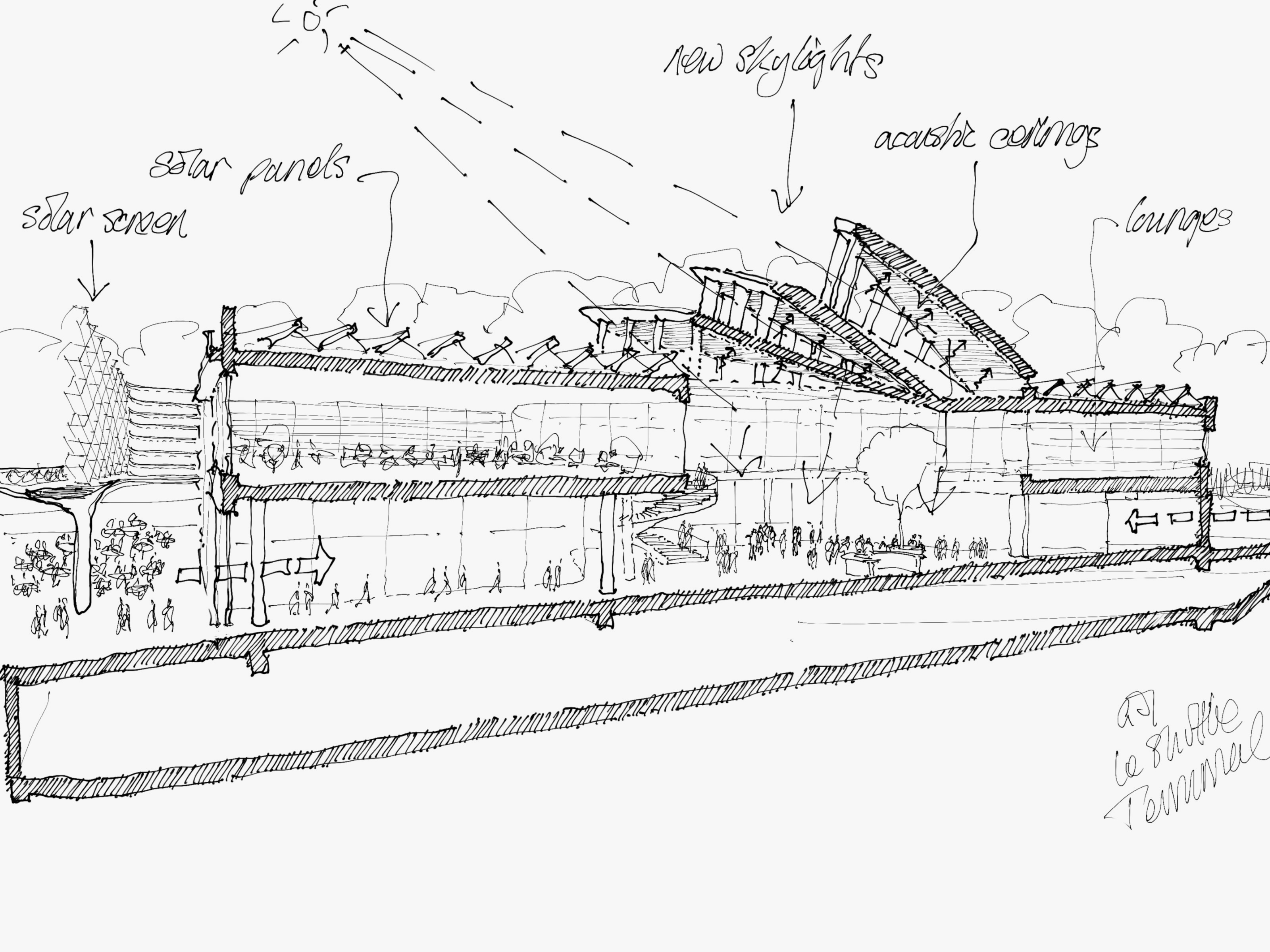
A sketch cross-section through the new structure
From the new check-in area beneath the canopy structure to a new food hall, much improved daylighting and better exterior weather protection, the new spaces should make the travel experience far more enjoyable. There will be more places to sit, better acoustics thanks to wood cladding and indoor planting, and a redesigned ticketing experience, along with better facilities for EV drivers.
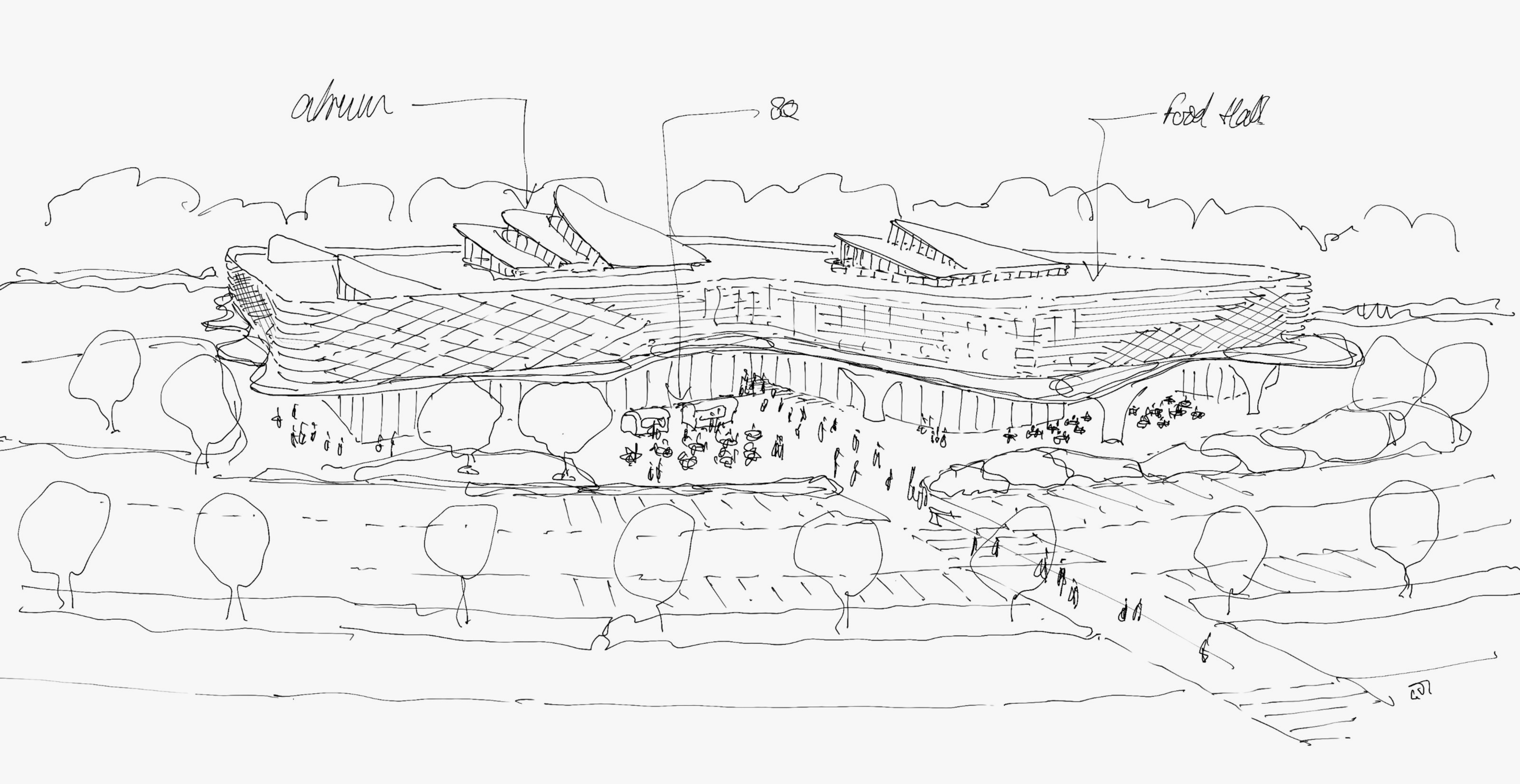
Sketch showing the revised terminal layout
‘We’ve spoken an awful lot with the client about travel anxiety and how to ease it,’ says Hollaway, who points out that the improved communications and more open, accessible feel of the space is geared towards creating a restful, less stressful state of mind. ‘It’s about creating architecture with longevity,’ the architect says, noting his long experience of designing buildings for the harsh coastal environment. ‘If you’re an architect living down here you spend a lot of time talking about seagulls,’ he adds ruefully.
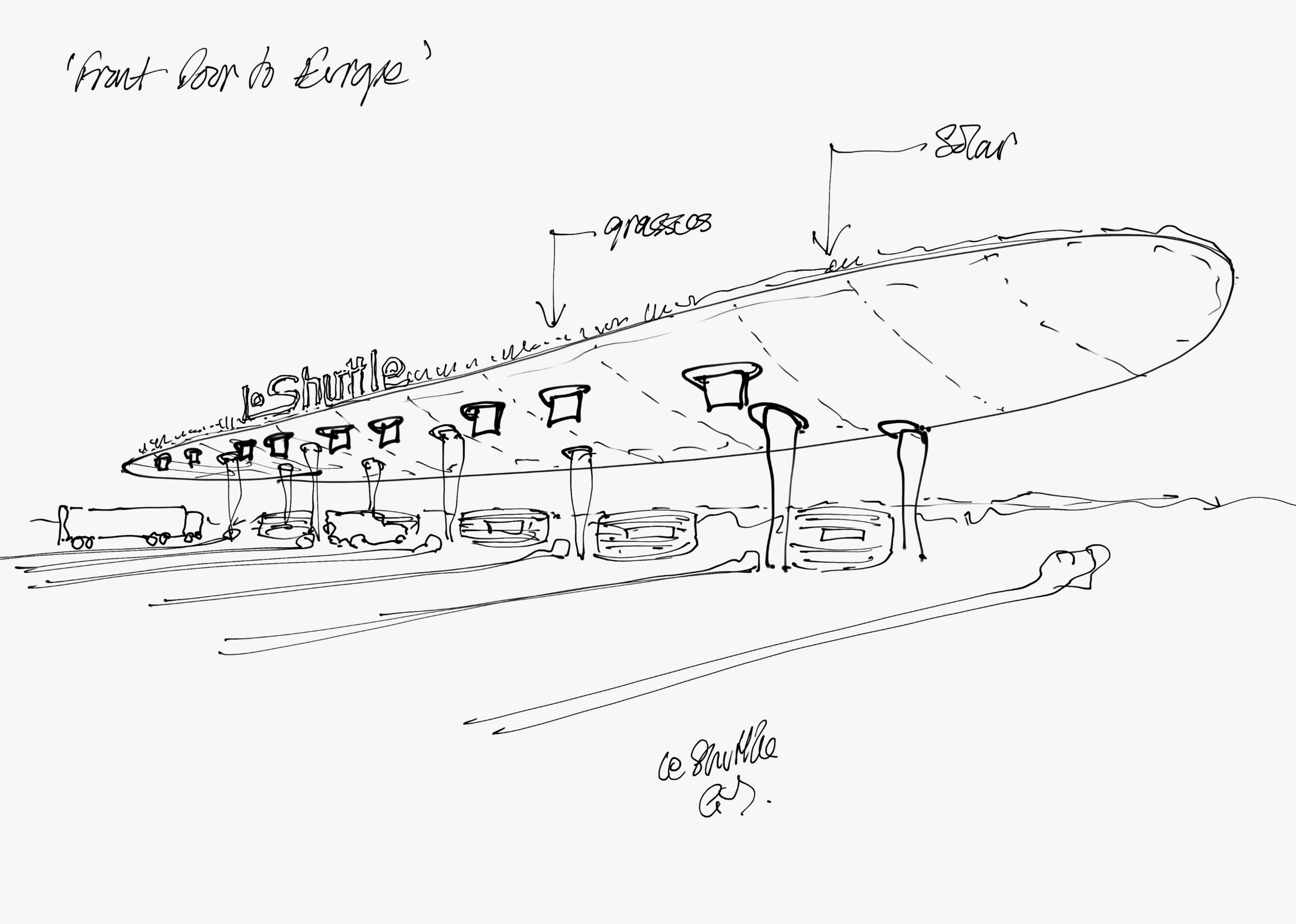
The new ticketing structure
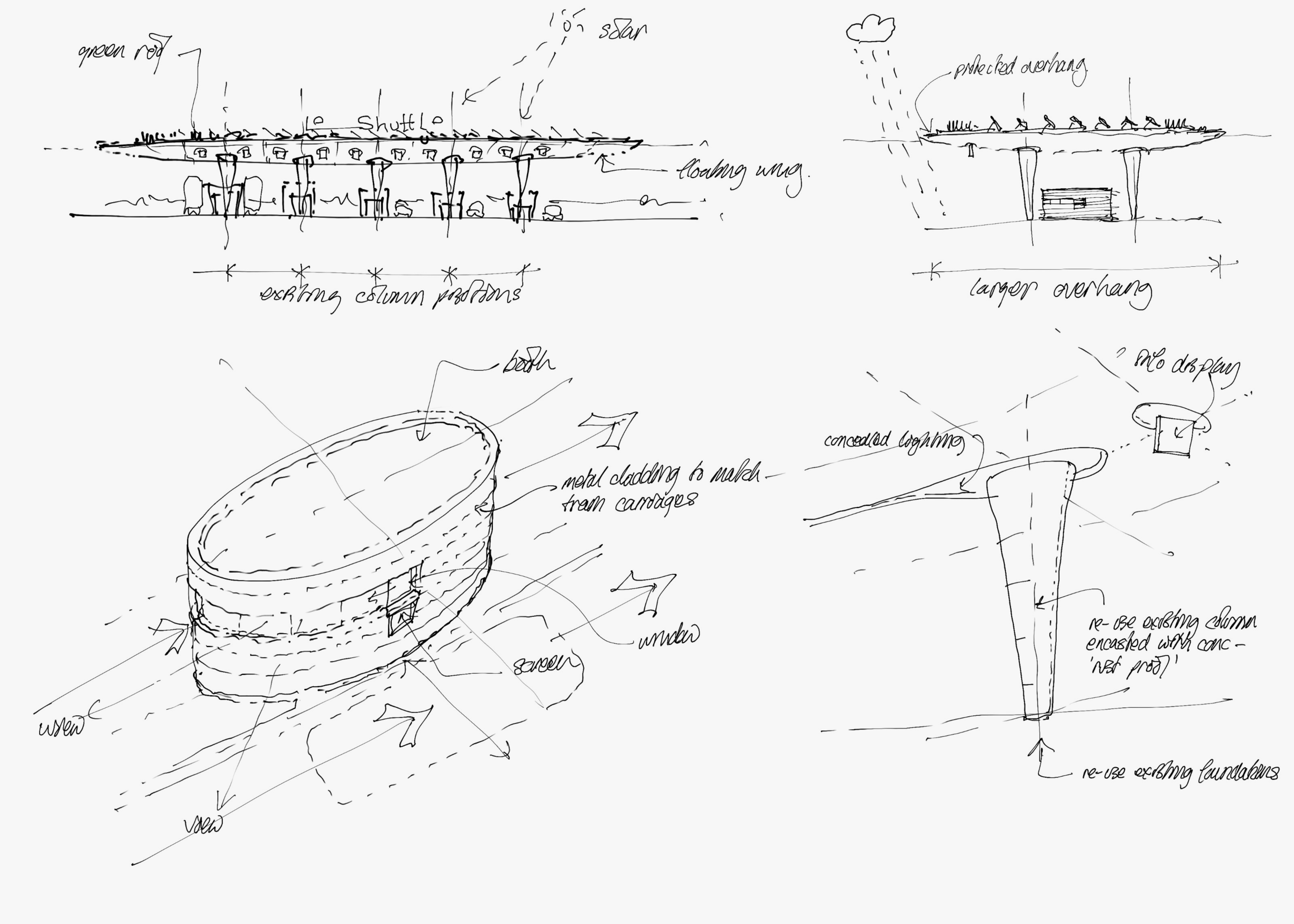
Sketches of the new ticketing structure
Ultimately, the new building will serve as the country’s gateway to Europe (and to the UK), a 24/7 environment that will act as a beacon, both for travellers and for sustainable architectural design.

Render of the LeShuttle terminal redesign by Hollaway Studio
HollawayStudio.co.uk, @Hollawaystudio, LeShuttle.com
Jonathan Bell has written for Wallpaper* magazine since 1999, covering everything from architecture and transport design to books, tech and graphic design. He is now the magazine’s Transport and Technology Editor. Jonathan has written and edited 15 books, including Concept Car Design, 21st Century House, and The New Modern House. He is also the host of Wallpaper’s first podcast.
-
 These Guadalajara architects mix modernism with traditional local materials and craft
These Guadalajara architects mix modernism with traditional local materials and craftGuadalajara architects Laura Barba and Luis Aurelio of Barbapiña Arquitectos design drawing on the past to imagine the future
-
 Robert Therrien's largest-ever museum show in Los Angeles is enduringly appealing
Robert Therrien's largest-ever museum show in Los Angeles is enduringly appealing'This is a Story' at The Broad unites 120 of Robert Therrien's sculptures, paintings and works on paper
-
 The Wallpaper* style team recall their personal style moments of 2025
The Wallpaper* style team recall their personal style moments of 2025In a landmark year for fashion, the Wallpaper* style editors found joy in the new – from Matthieu Blazy’s Chanel debut to a clean slate at Jil Sander